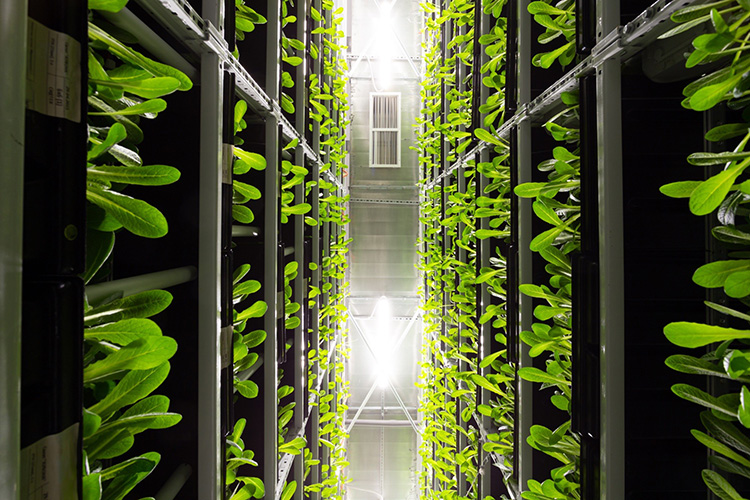Report on Speed Breeding Technology and its Alignment with Sustainable Development Goals
Introduction: Addressing Food Security and Climate Change in Kashmir
In response to escalating food demand driven by population growth and mounting environmental pressures, scientists in Kashmir are implementing speed breeding technology. This initiative directly confronts challenges such as climate change, declining arable land, water scarcity, and pest resurgence, which threaten regional food security. This report analyzes the application of speed breeding at the Sher-e-Kashmir University of Agricultural Sciences and Technology (SKUAST) and its significant contributions to achieving key Sustainable Development Goals (SDGs), particularly SDG 2 (Zero Hunger) and SDG 13 (Climate Action).
Advancing SDG 2 (Zero Hunger) through Accelerated Crop Development
Speed breeding is a critical innovation for ensuring food security and improving nutrition, directly supporting the targets of SDG 2. The technology accelerates the development of high-yield and nutritionally enhanced crop varieties.
- Accelerated Breeding Cycles: By manipulating environmental conditions such as light, temperature, and humidity, speed breeding allows for up to six crop generations per year, compared to one or two in traditional field conditions. This drastically reduces the time to develop a new crop variety from over a decade to just a few years.
- Increased Productivity: The rapid development of improved varieties of staple crops like rice, wheat, maize, and pulses helps increase food production to meet the demands of a growing population.
- Enhanced Nutritional Quality: The process facilitates biofortification. At SKUAST, researchers have successfully developed maize with enhanced vitamin A and quality protein traits, directly addressing malnutrition, a key target under SDG 2.
Contribution to SDG 13 (Climate Action) and SDG 9 (Innovation)
The development of climate-resilient crops is a fundamental strategy for agricultural adaptation under SDG 13. Speed breeding serves as a powerful application of scientific innovation (SDG 9) to build resilience against climate change impacts.
- Developing Stress-Tolerant Varieties: Scientists are using the technology to develop crops resistant to biotic and abiotic stresses. This includes rice varieties that can withstand diseases like blast and bakanae, as well as cold weather prevalent in Kashmir.
- Adapting Crops to Local Conditions: The technology is crucial for tailoring crops to specific agro-climatic zones, such as the varied altitudes in Kashmir, ensuring stable yields despite erratic weather patterns.
- Improving Vegetable Crops: For vegetables like tomatoes and cucurbits, speed breeding accelerates the creation of disease-resistant and nutrient-rich varieties with a longer shelf life, enhancing both food security and farmer income.
Challenges to Sustainable Implementation: A Conflict with SDG 7 and SDG 12
While promising, the widespread implementation of speed breeding faces significant challenges that must be addressed to ensure its alignment with SDG 7 (Affordable and Clean Energy) and SDG 12 (Responsible Consumption and Production).
- High Energy Consumption: Speed breeding chambers require constant energy for LED lighting, air conditioning, and humidity control, leading to high power usage and operational costs. This presents a conflict with goals for sustainable energy use.
- Financial Costs: The high cost of specialized equipment and electricity remains a major barrier to scaling the technology. Innovations in solar power and energy-efficient systems are being explored to mitigate this limitation.
- Technical Expertise: The operation and maintenance of speed breeding facilities demand specialized technical knowledge.
- Resource Management: While water usage is low due to hydroponic systems, soil management is crucial. Soil must be sterilized and replaced regularly to prevent infections and nutrient depletion, requiring careful resource planning.
Regulatory Status and Future Outlook: Fostering SDG 17 (Partnerships for the Goals)
The future of speed breeding in India is shaped by its regulatory landscape and collaborative efforts, which are vital for achieving SDG 17 (Partnerships for the Goals).
- No Biosafety Barriers: Researchers clarify that speed breeding accelerates plant growth through environmental control and does not involve genetic modification. Consequently, it faces no biosafety concerns or regulatory hurdles in India.
- National Collaboration and Standardization: The International Rice Research Institute (IRRI) is playing a pivotal role in establishing speed breeding facilities across India. Through its partnership with the Indian Government’s Department of Biotechnology (DBT), IRRI is helping to create a national standard for the technology, fostering a collaborative ecosystem for agricultural innovation.
- Future Potential: By integrating speed breeding with genomic selection and CRISPR gene editing, the approach holds immense potential to reshape modern plant breeding, enabling a rapid and effective response to global challenges of climate change and food insecurity.
Analysis of Sustainable Development Goals (SDGs) in the Article
1. Which SDGs are addressed or connected to the issues highlighted in the article?
-
SDG 2: Zero Hunger
- The article directly addresses the challenge of meeting “growing food demand” due to a rising population. The core focus is on enhancing food production through the development of high-yield and resilient crops, which is central to ending hunger and ensuring food security.
-
SDG 9: Industry, Innovation, and Infrastructure
- The article highlights scientific research and technological innovation as key solutions. The implementation of ‘speed breeding’ by institutions like SKUAST and IRRI, funded by the Department of Science and Technology, exemplifies the push to enhance scientific research and upgrade technological capabilities in the agricultural sector.
-
SDG 13: Climate Action
- A primary motivation for using speed breeding is to combat the negative impacts of climate change on agriculture. The article mentions challenges like “shorter seasons,” “erratic weather,” and “water deficit.” The technology aims to develop “climate-resilient” and “stress-tolerant varieties” to strengthen agriculture’s adaptive capacity to these climate-related hazards.
2. What specific targets under those SDGs can be identified based on the article’s content?
-
Under SDG 2 (Zero Hunger):
- Target 2.4: By 2030, ensure sustainable food production systems and implement resilient agricultural practices that increase productivity and production, that help maintain ecosystems, that strengthen capacity for adaptation to climate change, extreme weather, drought, flooding and other disasters and that progressively improve land and soil quality. The article’s focus on developing “climate-resilient,” “high yield,” and disease-resistant crops directly supports this target by creating more resilient agricultural practices.
- Target 2.a: Increase investment in, inter alia, rural infrastructure, agricultural research and extension services, technology development and plant and livestock gene banks in developing countries, in particular least developed countries, to enhance agricultural productive capacity. The article mentions the project is funded by the “Department of Science and Technology, Ministry of Sciences” and involves research institutions (SKUAST, IRRI) developing new agricultural technology, which aligns with this target.
-
Under SDG 9 (Industry, Innovation, and Infrastructure):
- Target 9.5: Enhance scientific research, upgrade the technological capabilities of industrial sectors in all countries, in particular developing countries, including, by 2030, encouraging innovation and substantially increasing the number of research and development workers per 1 million people and public and private research and development spending. The entire article is a case study of this target in action, detailing a scientific innovation (“speed breeding”) being pioneered by researchers (“Scientists at the Sher-e-Kashmir University of Agricultural Sciences and Technology”) to solve a critical problem.
-
Under SDG 13 (Climate Action):
- Target 13.1: Strengthen resilience and adaptive capacity to climate-related hazards and natural disasters in all countries. The development of crop varieties that can withstand “erratic weather,” “shorter growing seasons,” and “cold weather” is a direct measure to strengthen the resilience of the agricultural system in Kashmir against climate-related hazards.
3. Are there any indicators mentioned or implied in the article that can be used to measure progress towards the identified targets?
-
For SDG 2 Targets:
- Time to develop new crop varieties: The article explicitly contrasts the traditional timeline of “up to a decade” with the significantly shortened cycle achieved through speed breeding. This reduction in time is a measurable indicator of progress.
- Number of crop generations per year: The article states that speed breeding allows for “up to four to six seed-to-seed cycles per year” compared to “just one or two generations” traditionally. This is a direct performance indicator of the technology’s efficiency.
- Development of specific traits: Progress can be measured by the successful development of varieties with desired traits, such as “resistance to common crop diseases” (blast and bakanae in rice), “biofortification for vitamin A” in maize, and improved “nutritional quality of staple crops.”
-
For SDG 9 Target:
- Number of speed breeding facilities: The article mentions IRRI’s role in establishing facilities in “Jabalpur, Mohali, Coimbatore, Ludhiana, and more,” indicating a measurable expansion of this technology’s infrastructure.
- Adoption of standardized protocols: The development of the “first ever speed breeding protocol for rice” by IRRI-SARC and its recommendation as a “national standard” by the Department of Biotechnology (DBT) is an indicator of technological standardization and advancement.
-
For SDG 13 Target:
- Number of climate-resilient varieties developed: The primary goal is to create “climate-resilient crop varieties.” The number of such varieties developed and successfully tested in field conditions serves as a key indicator of enhanced adaptive capacity.
4. Summary Table of SDGs, Targets, and Indicators
| SDGs | Targets | Indicators |
|---|---|---|
| SDG 2: Zero Hunger |
|
|
| SDG 9: Industry, Innovation, and Infrastructure |
|
|
| SDG 13: Climate Action |
|
|
Source: india.mongabay.com







